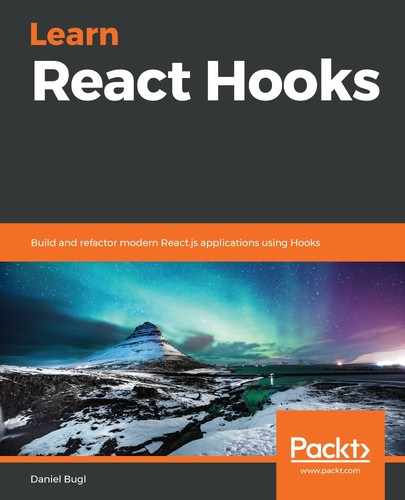In this chapter, we first defined two pages for our blog: the home page and a page for single posts. We also created a component for the HeaderBar. Afterward, we implemented routing by defining routes, links to the single posts, and links back to the main page. Finally, we used routing Hooks to implement dynamic navigation when creating a new post, and implemented a footer that shows the current URL.
Routing is very important, and is used in almost every application. We now know how to define separate pages and how to link between them. Furthermore, we learned how to dynamically navigate between pages using Hooks. We also learned how to access routing information with Hooks for more advanced use cases.
There are many more things that the Navi library can do. However, this book focuses on Hooks, so most features of Navi are out of scope. For example, we can fetch data using Navi, implement error pages (for example, a 404 page), lazy loading and compose routes. Feel free to read up on those features in the official documentation of Navi.
In the next chapter, we are going to learn about the various Hooks that are provided by the React community: for input handling, for responsive design, to implement undo/redo, and to implement various data structures and React life cycle methods using Hooks. We are also going to learn where to find more Hooks provided by the community.
